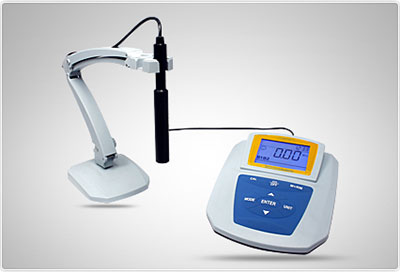How Do you Use Turbidity Meter?
Thu, Sep 28 by ATO.com
Turbidity meter is an instrument used to measure the concentration of suspended particles or the degree of suspended matter in a liquid. It is widely used in water quality monitoring, drinking water testing, pharmaceuticals, food production and other fields. In this article, ATO shop will guide you on how to use a turbidity meter properly!
How Turbidity Meters Work
The working principle of the turbidity meter is to determine the turbidity value by measuring the scattering of light in the liquid, thus reflecting the concentration of particles or suspended matter in the liquid. Its working principle mainly includes the following steps:
- Light emission: Turbidity meter usually uses laser or LED as a light source, by launching a beam of monochromatic light into the liquid to be measured.
- Light scattering: Light in the liquid and suspended particles scattering effect, the intensity of the scattered light and the concentration and size of the particles.
- Reception and detection: Turbidity meter receives the scattered light, and the use of photosensitive components will be converted to electrical signals. The measuring instrument calculates the turbidity value based on the received electrical signal.
How to Use
- Preparation: Make sure the turbidity meter is in normal working condition before you use it, and select the appropriate measurement range and parameter settings as needed.
- Calibrate the instrument: Calibrate the instrument with standard samples to ensure accurate measurement results. The calibration process is carried out according to the specific instrument model and manufacturer's instructions.
- Sample treatment: Pre-treat the liquid to be measured as required. For example, if the sample has suspended particles or impurities, it can be treated with filter paper or a centrifuge to remove them.

- Measurement operation: Inject the sample into the measurement cell of the turbidity meter. Be careful to avoid air bubbles, to ensure that the sample fully covers the measurement cell.
- Reading and recording: Start the instrument measurement procedure and wait for the measurement to be completed. Measurement results will be displayed in digital form on the instrument screen. Record the measurement results and carry out the necessary data processing and analysis.
- Cleaning and maintenance: After use, clean the measuring cell and related parts of the turbidity meter in time to prevent cross-contamination. Regular inspection and maintenance of the instrument to maintain its normal working condition.
Notes for Turbidity Meter
- Sample selection: select the sample to match the measurement requirements, and according to the need for appropriate pre-treatment. Pay attention to the transparency of the sample and the concentration of particulate matter to ensure accurate measurement results.
- Avoid contamination: use dust-free paper towels or special cloth to clean the turbidity meter, to avoid contamination and scratching the measurement cell. Avoid direct contact with the measuring cell, so as not to leave fingerprints or stains that affect the measurement.
- The correct operation: in accordance with the instrument instructions and operating manual for the guidance of the correct operation. Avoid operating errors or too fast, so as not to affect the accuracy of the measurement results.
- Regular calibration: regular calibration of the turbidity meter to ensure the accuracy and reliability of the measurement results. Calibration frequency and method can be adjusted according to the requirements of the specific instrument.
- Safety: When using the turbidity meter, pay attention to the safe operation to avoid eye injury. According to the laboratory specification, please wear appropriate protective glasses and gloves.


